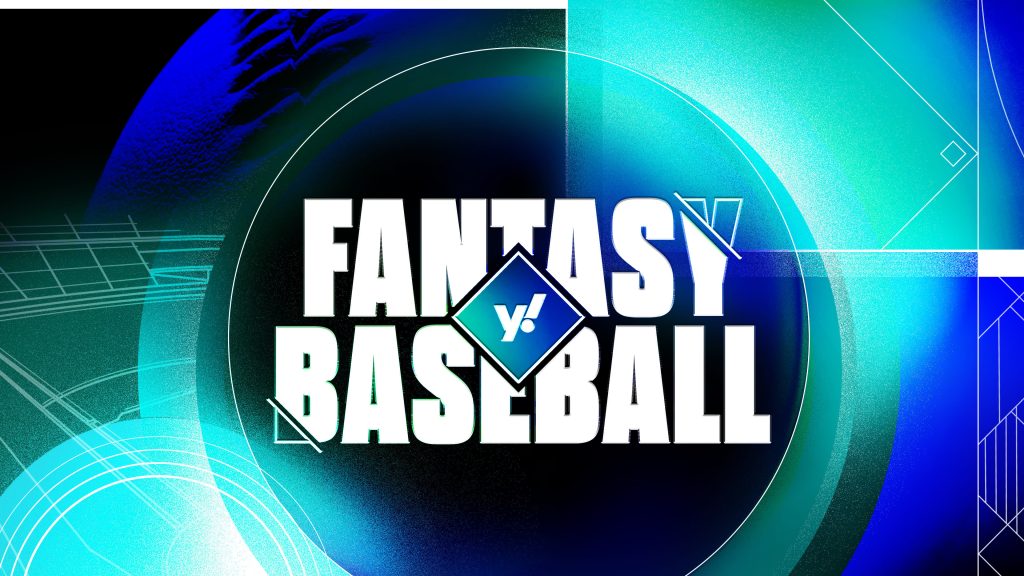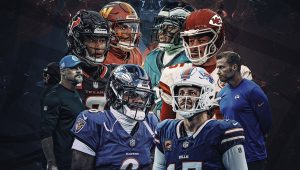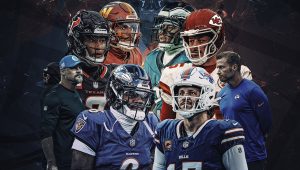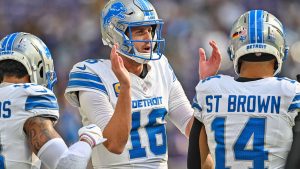Check out this how-to guide if you’re looking to play fantasy baseball for the first time or just need of a fresher.
Fantasy baseball remains a staple for MLB fans, matching the everyday excitement on the field that has truly become a worldwide phenomenon. If you love baseball, and count down the days from the end of the World Series to when pitchers and catchers report in February, this is the game for you. You’ll get to build your team through the draft, targeting a mix of stars, solid starters, rookies and role players. Then ride the highs and lows of the baseball season, from Opening Day all the way to the final out as your squad goes for the title.
If you’ve never played fantasy baseball before and want to know more about how it works, don’t worry. We’ve put together this quick-and-easy how-to guide to help ease you in. See why this game within the larger game is so much fun for avid baseball fans. And you might even get a title in the process.
[Join or create a Yahoo Fantasy Baseball league for the 2025 MLB season]
Featured sections
What is Fantasy Baseball?
When it comes down to it, fantasy baseball is a collection of players assembled on a team, and their accumulated real-life stats get converted into fantasy points. If you’re able to score more fantasy points than your opponent, then you win either that particular week’s matchup or accumulate statistics to rank highly in multiple categories to determine your place in your league’s standings. If you’re playing weekly matchups and win enough times throughout the season, then you can secure a spot in the fantasy playoffs and potentially become a champion.
Maybe you don’t get a parade through your city’s streets like the big leaguers, but with the title come the spoils of reminding your friends whom you defeated with some offseason trash talk. Sounds pretty fun, right?
There are many different ways to play fantasy baseball, and it’s easy to do so using Yahoo’s default settings. Or, you can customize the scoring settings to suit your league’s tastes. But the idea is the same: you as the fantasy manager must draft your team first and foremost (more on that below). After that you manage the starting lineup and bench, adding players to your active roster and dropping them based on injuries and performance. Players can be added from the free-agent pool called the waiver wire — you’ll usually need to cut a player to fit the pickup on your roster. There are also deadlines to keep in mind when making lineup and roster changes as well as important dates to keep in mind throughout the season. Trades could come into play, too, where you agree with leaguemates to swap players to suit your mutual needs for the rest of the season.
All this happens throughout the season as you operate as a fantasy GM. This regular dedication can mean starting the right player for a day or week (depending on if you’re in a daily or weekly league format) to accumulate fantasy points that propel you to wins in weekly competitions with leaguemates.
Don’t feel that this game is being played on a computer. Enjoy watching the actual MLB games and look at how the scoring translates to fantasy as you follow your team’s progress on your desktop or our very user-friendly Yahoo Fantasy app. You’ll see that your team compiles stats for home runs, runs, RBI, wins, saves and many other categories. As you get more experience, you’ll see how stars like Shohei Ohtani and Bobby Witt Jr. help you across several categories, and thus are more valuable to your team.
Some leagues play for more than bragging rights. They could set a monetary reward for the champion or the top finishers in the league, staggered based on final placement. For private leagues, the commissioner works with the league members to determine what’s at stake and how the end-of-season awards are distributed. Yahoo can even help with holding the funds and paying out the winners for Private Prize Leagues. Some leagues even agree upon a punishment for the last-place team, and those can be as funny as they are creative. So don’t finish last!
Join a Public League
Don’t worry if you can’t get a group together to play fantasy baseball — there are options to play for free or for cash in public leagues. Want to keep it casual with no monetary stakes involved? Join a free league and have some fun.
If you ever had a few friends who wanted to play but not enough to fill an entire league, our new feature, Draft Now With Friends, is the perfect solution! You can instantly invite up to three people to join you in a free public league. All you have to do is enter a free public draft room and tap the “Add Friends Pre-Draft” button to invite people to join your draft! (This feature is currently only for public leagues.)
If you’re confident and want to up the ante, join a Public Prize League (formerly Pro League) by paying an entry fee. This fee goes towards cash prize payouts for first, second, and third place. That means if you don’t like your team, draft again!
What are the different scoring formats in fantasy baseball?
Players on your fantasy team’s active roster put up stats in the categories tied to your league settings, and your scoring format dictates your scoring. There are three formats in which people typically play fantasy baseball. You can also try others to see what suits your league’s tastes, but the main formats to play are:
Head-to-head (H2H): This is similar to fantasy football, in that there are weekly matchups against the different opponents in respective leagues. Fantasy managers move players back and forth from their starting lineup to their bench on a daily basis starting Monday and running through the final games Sunday, with teams compiling statistics in the same 10 categories as above.
Typically, leagues only count that overall victory, so the goal is to win at least six of the 10 categories by the end of each week. There is an option to play a cumulative style where your record is how many categories you’ve won and lost in a week. Note: you can also consider using more or less than 10 categories.
Standings are kept for your league, and at the end of the season, a designated number of teams make it to the playoffs. That’s when it becomes even more fun and intense.
Points Only: In this format, there are point values assigned to every statistic in 17 separate categories, both hitting and pitching, that account for scoring. Points are added up to determine the standings — there are no playoffs in this format. Here are the point designations for each stat:
-
Batter Stat Categories and Point Values
-
Singles (1B) 2.6
-
Doubles (2B) 5.2
-
Triples (3B) 7.8
-
Home Runs (HR) 10.4
-
Runs (R) 1.9
-
Runs Batted In (RBI) 1.9
-
Bases on Balls (BB) 2.6
-
Stolen Bases (SB) 4.2
-
Hit by Pitch (HBP) 2.6
-
-
Pitcher Stat Categories and Point Values
-
Saves (SV) 8
-
Wins (W) 8
-
Strikeouts (K) 3
-
Earned Runs (ER) -3
-
Outs (O) 1
-
Bases on Balls (BB) -1.3
-
Hits (H) -1.3
-
Hit by Pitch (HBP) -1.3
-
Head-to-Head Points and Head-to-Head Weekly Points: These two options — one with daily roster management and the other with weekly every Monday — are a combination of the Points and H2H formats above, in that each matchup the teams compile points in the categories listed immediately above. Teams are assigned wins and losses each week, and the standings are kept for each league. A predetermined number of teams make the playoffs, which begin Week 22 and continue until one team is crowned champion at the completion of Week 24 and the MLB season.
For the first time, default scoring in all newly created leagues will be head-to-head points. This will be the standard across all new leagues, but private-league commissioners can change their scoring settings if they so choose while those in public leagues will also have head-to-head category and rotisserie scoring as options as well.
In private leagues, you can increase or decrease the number of teams based on how many people you want to play in your league. It’s ideal to have an even number of teams for H2H leagues, but there’s an option to play with an odd number (as long as you have five or more teams).
Rotisserie: This is the original format that was founded in the 1980s. Active players’ stats are compiled for each fantasy squad and then teams are ranked in each category based on their cumulative numbers, with the standings determined by how highly the players rank in all categories combined — there are no playoffs in this format. These are the 10 categories, divided evenly between pitching and hitting.
-
Batter Stat Categories: Runs (R), Home Runs (HR), Runs Batted In (RBI), Stolen Bases (SB), Batting Average (AVG)
-
Pitcher Stat Categories: Wins (W), Saves (SV), Strikeouts (K), Earned Run Average (ERA), (Walks + Hits)/ Innings Pitched (WHIP)
So, if your team has the most home runs in a 10-team league, that would be worth 10 points. If your squad has the fewest homers, you would receive 1 point, and so on for how you rank in each of the categories.
Try one format and see if there are any tweaks you’d like to make. Or change formats altogether. That’s what’s fun about fantasy baseball — there are different ways to play to suit what you enjoy the most.
How do you draft a fantasy baseball team?
When you were a kid there was that excitement that built for your birthday. That same anticipation is there waiting for one of the greatest days of the year: draft day! That’s the day everyone in your league convenes to pick your respective rosters. If you’re lucky to be near one another, there are few things better than a live draft. If your league is scattered all over the country — in some cases the world — Yahoo Fantasy has you covered. You can draft online or even on your phone. For commissioners, we also have tips on getting your league ready to draft.
You can also practice with a mock draft to get ready for the real thing. It’s a valuable resource before going into a live setting because you want to get comfortable with the draft format (more on that below), plus get a feel for the board and where players are being drafted.
If you’re looking for a baseline expectation or range of where to expect certain players to get drafted, Yahoo Fantasy’s draft analysis tool helps understand each player’s average draft position (ADP). Some will go later, and others will go early, so mocking will help get a sense of the market value when it’s time to draft.
The Yahoo default positions for each team in a 12-team league are: one catcher (C), first baseman (1B), one second baseman (2B), one third baseman (3B), one shortstop (SS), three outfielders (OF), two utility players (Util), two starting pitchers (SP), two relief pitchers (RP), four pitchers (P), five bench spots (BN) and four injured list spots (IL). Players are moved in and out of the starting lineup based on however fantasy managers want to deploy their teams, according to league rules determining daily or weekly transactions.
The most common way to select teams is through what’s called a snake draft. Don’t worry, no reptiles are used or harmed while all the fantasy managers are going around choosing their teams. In a 12-team league, after the order is determined, teams start drafting from No. 1 through 12, and then in the second round start at 12 and count backward toward No. 1 again. Then repeat the process until all the teams have been selected. The default positions listed above go through 23 rounds, but that can be increased based on your league’s wishes.
If you’d like a little more challenging way to draft, your league can elect to try a Salary Cap Draft, where all the teams start with a predetermined budget, usually $260. Instead of going around and picking players, the managers in your league get to nominate players and assign them a salary as long as it’s within their remaining budget. While it would be impossible to roster Aaron Judge and Shohei Ohtani on the same team in a snake draft format (both are among the consensus top-five players according to Yahoo Fantasy rankings), in a salary cap draft managers can load up on stars and leave a few dollars for less-productive players at the end of their roster. It takes longer to draft this way, but there is more strategy in managing the budget to fill up a team.
New this year: Start Active Players!
Want to lessen the load of having to meticulously set your fantasy baseball lineup, day in and day out? With the tap of a button on the web or from the Yahoo Fantasy app, the new free Start Active Players feature will set your lineup for you, filling your lineup with healthy players who have a game on that specific day/week and benching those who are off and/or injured. Fantasy Plus subscribers get access to Start Optimal Players, which fills your lineup with players who have the best rank. And don’t worry, using this feature from the home screen can set your lineup across multiple fantasy baseball leagues instead of just one, if you so choose.
When the draft is complete, the fun is just beginning. Now it’s time to ride the wave of emotions that your team gives you on a daily basis through the end of the season. Add players off waivers. Make some hard cuts. Pull off a trade. Above all, talk some good-natured trash with your leaguemates. It’s all in the fun of playing fantasy baseball!











